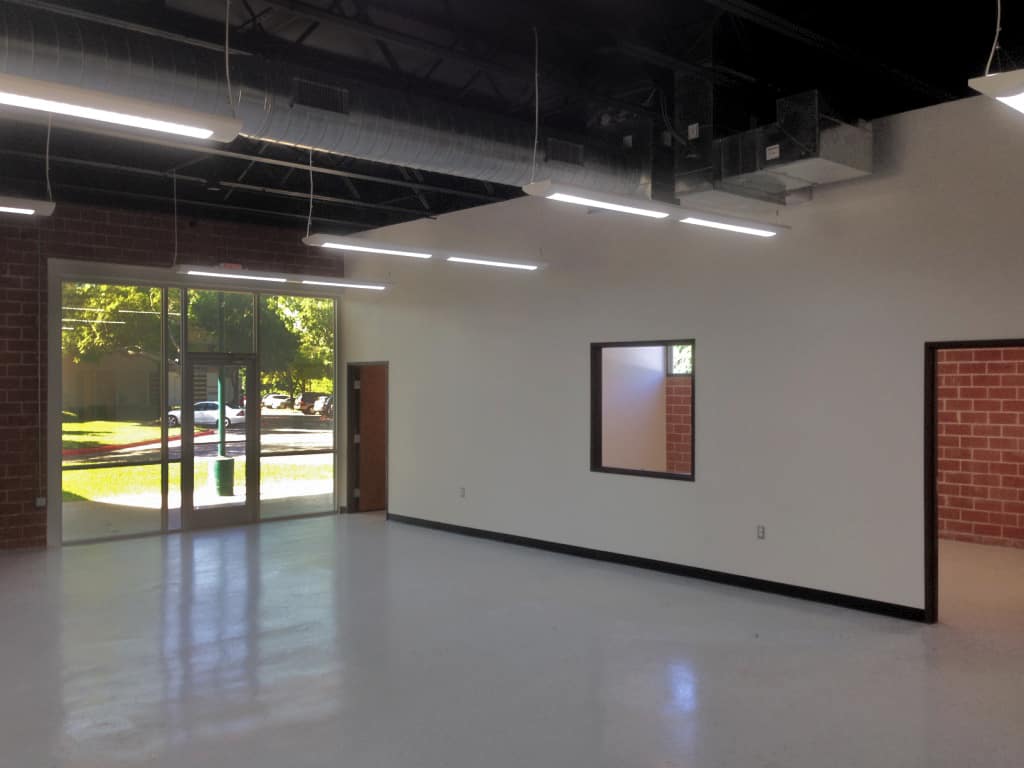Why are lien release waivers important for your contractor to receive and to protect your build out investment?
Whether you’re moving a new business tenant into a second generation space or a first-generation space, there will almost always be some level of construction involved. It’s a rare event when a space, as is, fulfills all of a tenant’s specific needs. With 1st gen spaces, expect a lot of construction since the build-out happens in an unfinished space. With second-generation spaces, the amount of construction can range from minor to extensive depending on the tenant’s requirements. In the middle of all of this work, though, the contractor might mention an issue with lien release waiver forms. While that might sound like trivial paperwork, they’re very important for your contractor and to protect your build-out investment.
Mechanic’s Liens
Payment timelines can run long in the world of construction. A supplier or subcontractor might wait up to three months to see payments in some instances, though that’s a rare occurrence. If someone fails to make a payment, though, the supplier or subcontractor can issue what’s called a mechanic’s lien.
A mechanic’s lien is an attempt to secure payment. What makes a mechanic’s lien problematic is that it gets filed against a property, not against the party that failed to make payment. Let’s say that you gave a new tenant a $15,000 tenant improvement allowance that they passed onto a general contractor. If that contractor has $7,500 worth of subcontracting done and fails to pay, you can find your property at risk of seizure to settle the debt. That means you must settle the debt to protect your property and all of your tenants.
What Is a Lien Release Waiver?
A lien release waiver or lien release form serves two basic functions in a build-out project. Its first main purpose is to act as a kind of receipt for work done or supplies. The lien release form gets issued at the time of payment by the subcontractor or supplier.
The second main function of a lien release form is that it signs away the subcontractor’s or supplier’s right to issue a mechanic’s lien at some later date. So, let’s say that a supplier provides $5,000 in wallboard, joint compound, paint, and other supplies. Your general contractor pays the supplier and gets a lien release form. The supplier can’t show up down the road in three months and issue a lien because you owe them money. The general contractor can show the lien waiver as proof of payment.

Types of Lien Release Waiver Forms
Lien release forms come in several varieties:
Unconditional Lien Release Waiver Forms
There are two main types that you would see: Unconditional waiver form for partial payment and Unconditional waiver form for final payment.
The unconditional (payment first) waiver form for partial payment is exactly what it sounds like. The supplier or subcontractor gets a partial payment based on partially completed work or partially fulfilled orders. Let’s say a general contractor brings in an electrician to run basic power in a 1st gen space. The electrician does enough work so that the general contractor can get in and begin working with power tools for the bulk of the build out.
The general contractor will likely bring in the electrician again once the walls are in place. The electrician may ask for payment for getting basic power up and running. When the general contractor pays the electrician, the electrician provides an unconditional lien release form for payment. That means the electrician can’t issue a lien for that portion of the payment.
The unconditional lien waiver for final payment comes after the work is complete. Once the electrician comes in and finishes wiring the build-out, they get their final payment. Then, they issue the final payment form and release any right to issue liens for that portion of the payment as well.
Conditional Lien Release Waivers
Conditional lien release forms prove far less common because they get issued without mandatory payment. Instead, the release of lien form serves as more of a promise on the part of the general contractor to pay at some point. Most suppliers and subcontractors avoid these forms unless they have very specific reasons to accept them, such as a long working history with a particular general contractor.
These lien release forms also come in two main forms: conditional lien release form for partial payment and conditional lien release form for final payment.
Forms and Notarization
Each state deals with the issue of lien form forms and notarization differently. Some states provide no forms and need no notarization. Other states offer recommended forms. Some states specify the forms. A handful of states need you to get the forms notarized.
Texas is very strict about lien release waiver forms. Texas regulations set out what must appear on the form. To simplify things, the state offers compliant forms that you can use. In addition, Texas imposes a notarization requirement on all lien release forms filed. While most people will likely use an in-state notary, Texas will accept forms notarized by an out-of-state notary. This proves helpful in cases where a supplier is located outside the state.

Why Is It Important?
The importance of the lien release form is two fold. The form serves as a record of payments made to suppliers and subcontractors. Although, general contractors may wish to include a copy of the payment made with the form as an added layer of proof. This means that the tenant or property owner who hires the general contractor can review them and confirm the money went where the contractor said it went.
It also serves as a legal shield for the property owner. As long as the general contractor and tenant keep adequate records, no one can come after the property owner for payments down the road.
Good lien release form records also prevent a knock-on effect in terms of legal action. If a property owner comes up on the wrong side of a faulty lien, they must sue the general contractor to get their money back. Why the general contractor? It’s typically the job of the general contractor to collect and file the line release forms in the first place. If they don’t do that, the property owner must assume they never made a payment.
How Do They Protect Your Build-Out Investment?
A build-out investment is a substantial commitment on the part of a real estate owner. It’s also a sign of good faith toward tenants and a way to secure tenants in a property. Yet, it also puts you at some level of financial risk. Lien release forms protect your build-out investment in several key ways.
Maintain Good Tenant Relations
One key way to protect your investment is by maintaining a good relationship with your tenants. While most tenants will understand if you want copies of their build-out records, some may be difficult about it. The tenant may treat the inquiry for records as intrusive or a sign of bad faith on your part. On the other hand, re-paying a bill that a tenant’s general contractor already paid can easily sour you on an otherwise good tenant.
Tenant Improvement Allowance
Lien release forms also protect you in terms of your tenant improvement allowance. These records show that the tenant actually used the money for the build-out and not for a wild weekend in Vegas or some other outstanding bills. It also helps demonstrate that they paid out for professional services during the build-out and not unlicensed labor they found online or through a buddy to save money.
Time
Your time is valuable. It’s also best spent managing your properties. When faulty liens appear, the faster you can shut them down, the less they cost you in lost time. Lien release forms shut those faulty liens down faster than anything else.
Legal Fees
Without a lien release form, you can end up in court trying to fight the lien itself or a legal action to seize your property to settle the debt. Since most property owners are not also practicing lawyers, dealing with that legal wrangling falls onto the shoulders of your lawyer. Good lawyers don’t come cheap. While your lawyer may well come out on top in the courtroom, it could end up costing you as much in legal fees as it would have cost you to simply pay the faulty lien in the first place. A lien release form means you get to take a pass on most or all of those legal fees in dealing with the faulty lien.

First Generation Space vs Second Generation Space
As a general rule, it’s best to secure lien release forms for any build-out. That said, however, an argument exists that these forms matter more for build-outs in first generation spaces than second generation spaces. It’s simply a matter of the volume of the work.
In a first generation space, your tenant is essentially dealing with a shell space. It’s a ground up buildout that covers everything from walls and wiring to carpet and paint. They may well bring in a design build team instead of an Austin general contractor. In short, a first generation space buildout will almost always cost a lot more and involve a much more substantial tenant improvement allowance. That means you run a bigger financial risk from the outset and a bigger financial risk in terms of future liens.
That means lien release forms are vital for protecting yourself and your property during and after a first generation space buildout.
Unless a tenant plans a complete revamp of a second-generation space, you’re looking at a smaller improvement allowance and substantially less work. The tenant will modify the space, but likely won’t knock out every wall or need a complete rewiring to make the space functional. The overall bill will come in far lower than a first generation buildout. That means you endure less risk from the outset and any potential future liens will likely contain meaningfully lower figures.
While no property owner wants to deal with a faulty lien, one from a smaller second generation buildout will prove less financially problematic.
Lien Release Forms Protect Everyone
Lien release forms may sound like they primarily protect property owners and their buildout investments. They certainly do protect property owners, but they also protect everyone else. The form ensures that the suppliers and subcontractors actually get their money. It also means that suppliers and subcontractors don’t develop reputations as people you don’t want to work with because they’ll file faulty liens later. They protect the general contractor by serving as proof of payment and proof that funding went where they said it went. They also protect the contractor from later lawsuits by property owners who would otherwise come up on the losing end of a mechanic’s lien.


